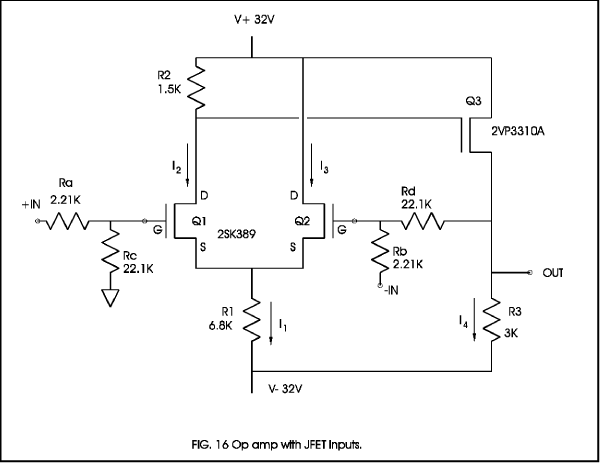I just received some BF256B and BF245C. I heard the 245 came after the 256 so I'll be able to test which works better, with enough supply to match a few pairs.
I haven't decided yet which instrumentation amplifier I'll use. This part of the analog domain still sounds like black magic to me but I know it must draw the least possible current and have a reasonable bandwidth (10MHz ?)
In case I can't find a suitable part, I can still put together a discrete op-amp with JFETs...
Interesting texts:
http://www.analog.com/library/analogdialogue/archives/47-10/discrete_amplifier.html (I wouldn't use high gain, unity is OK)
https://www.fairchildsemi.com/application-notes/AN/AN-6601.pdf (less advanced version but useful for estimating the noises)
http://www.forsselltech.com/media/attachments/JFET_Opamp.PDF (pretty cool tricks in the input stage but the impedance must be modified and I don't need the high voltage gain)
http://contifret.free.fr/ (discusses complementary vs non-complementary input topologies and JFET selection)
This discussion is a direct consequence of my discovery of this circuit (I can't remember where)

The advantage of a full discrete solution is the ease to evaluate power consumption, for example. And there is no hard-to-find dedicated circuit.
So maybe the next log will focus on how to enhance a similar circuit (that is not dedicated to audio applications). I know already that it misses an offset compensation (with a simple trimmer) and a constant current source (another FET to replace R1).
 Yann Guidon / YGDES
Yann Guidon / YGDES
Discussions
Become a Hackaday.io Member
Create an account to leave a comment. Already have an account? Log In.